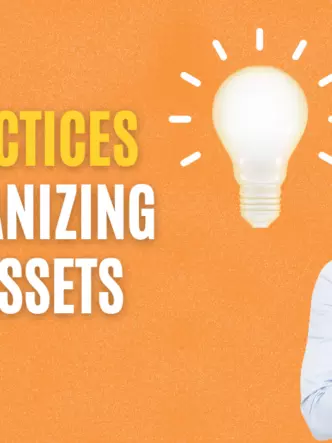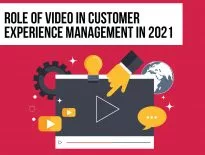Brands are starting to think beyond the experience offered by any single technology or media channel.
New technology continues to fuel consumer expectations in every industry. Getting a consistent brand voice and image across desktop and mobile devices is no longer enough..
Consumers now demand personalized content to suit their preferences. They expect a consistent user experience across every platform and marketing channel. These demands are more than what a typical content management system (CMS) can offer.
The Digital Experience Platform (DXP) addresses these limitations. This technology enables organizations to craft and manage personalized omnichannel customer experiences on a large scale.
They do this by taking many of the features a classic CMS provides and supercharging them with API-first architecture, cloud-native capabilities, and granular management at scale.
What is the Difference Between a CMS and a DXP?
It can be useful to think of DXP technology as an extension of the CMS. Where the web-based CMS is critical for developing, managing, and optimizing content-based user experiences, they don’t generally allow content creators to personalize those experiences for individual users.
If they do allow creators to generate and distribute personalized content, it’s often a resource-intensive and time-consuming process.
For example, nothing prevents a regular CMS administrator from synchronizing personalized content across web assets, self-service kiosks, and mobile apps. You could conceivably create, manage, and push that content to ten or twenty customers in a single day. But doing that for ten or twenty thousand customers requires an entirely different approach.
DXP technology provides multiple benefits that help brands establish consistent user experiences. Some of these include:
- Personalized Onboarding. Brands can use DXP technology to establish corporate intranet systems that streamline employee onboarding and training. This gives every employee access to a secure, personalized portal that contains all of the content they need to excel in their role.
- Easy Multi-Site Management. Most multi-site management strategies fail because of the amount of time, effort, and resources it takes to organize and deploy a coherent approach. Digital experience platforms enable brands to unify multiple sites (and other channels) under a single system.
- Automation-ready Insights. DXPs work by capturing and using customer data to fuel personalization initiatives and drive content value. Unlike a regular CMS, this data is structured appropriately for automation, eliminating some of the most time-consuming steps of the process.
- Support for Emerging Technologies. The digital experience is constantly changing to accommodate new channels and media formats. By focusing on API-first architecture, DXP vendors enable brands to leverage new technologies like virtual reality, augmented reality, the Internet of Things, and more.
All of these differences point to a content management workflow that prioritizes the user experience first and foremost. Wherever content drives value for customers, digital experience platforms enable the automation and personalization of the process in an efficient, scalable way.
They both deliver content and manage the presentation layer upon which the customer experience is based.
What DXPs Are Not: Myths and Misunderstandings
There is considerable overlap between CMS and DXP functionality. Plenty of professionals and digital leaders see this as a sign that the two technologies are essentially the same. The idea that digital experience platforms simply do content management with a different name is not accurate.
Some of these misunderstandings are easy mistakes to make. Others are oversimplifications of the transformative power that DXP vendors offer to brands. Here are a few of the most common ones:
- DXPs Do More Than Combine Existing Technologies. It can be tempting to look at the digital experience platform as a bucket of unrelated products. This view confuses the DXP with the channels it operates on. It enables superior content management across channels through a singular, unified foundation that supports the customer lifecycle at every point – it’s more than just the channels themselves.
- DXPs Are More Than a Responsive Website and Mobile App. Many digital leaders are skeptical because so many “omnichannel” platforms are little more than mobile-responsive websites and apps. The DXP goes beyond mobile and desktop devices, enabling content distribution on kiosks, OTT devices, emerging technologies, and much more.
- DXPs Are Not a Standalone Intranet Package. Since DXPs enhance employee onboarding functionalities, it’s easy to dismiss the technology as an enhanced intranet package. This ignores the value that digital experience management can have for customers, partners, and stakeholders outside the organization. It manages their experiences too.
- DXPs Do Not Replace IT Management or Marketing Systems. It’s common for people to think of systems in terms of the tools they use. Experiences are not directly accessible to tools. The digital experience platform is neither an IT system nor a marketing system, but it does provide a framework for IT and marketing professionals to work together on crafting valuable experiences for users.
- DXPs Are Not Static. The digital experience is dynamic. As a result, the technology that supports it must be, as well. DXPs respond to change and accommodate new technologies as they enter public use. They undergo constant evolution and refinement in pursuit of user value.
In-Depth Management of the Digital Experience Generates Value
Compared to a standalone CMS or an isolated digital asset management solution, DXPs drive value by making user data available and interoperable. These data inform analytics that generate insights, enable data-driven decision-making, and generate value for users and employees alike.
For example, consider an online service provider that markets to targeted leads using social media, a high-ranking blog, and pay-per-click ads. All of these marketing approaches lead prospects onto the company’s website where they apply for a quote from a salesperson.
With a traditional CMS in place, there is no easy way to categorize these leads according to the data available on their respective channels. The sales team has to treat every lead in broadly the same way, regardless of their segmentation, because it doesn’t have access to individual data. The only way for that data to make its way to a salesperson is manually – which doesn’t happen often.
If the company decides to increase the number of touchpoints available to potential leads, the problem only gets worse. The marketing and sales data environment becomes more fragmented, and it becomes harder to keep track of individuals in a way that closes the sales loop.
Without an automated way to track leads, follow them through the sales process, and close the loop easily, managing the customer experience at scale is impossible. This is the promise that the digital experience platform delivers on. It uses architectural innovation and intelligent analytics to enable data-driven decision-making at every user touchpoint.
Simplify Redundant MarTech Software Stacks
While CMS solutions allow brands to organize and distribute content, they necessarily work alongside other technologies to drive value. It’s all too easy for growing organizations to bolt new additions onto their marketing technology stack in a disorganized, ad-hoc manner. Over time, that creates redundancies and inefficiencies that impact the bottom line.
Digital experience platforms offer organizations a way to consolidate their tech stack and improve brand consistency. They provide an end-to-end solution for creating, managing, and distributing content across every level of the organization, improving productivity and insight across the board as a result.








